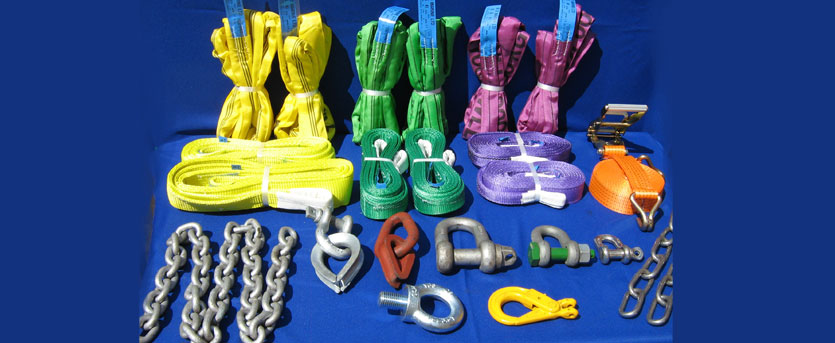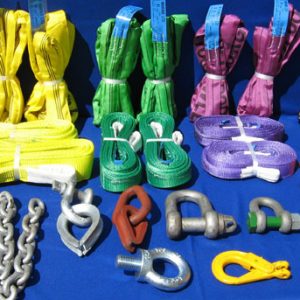Lifting industry is a wide field to work for several types of lifting operations and thus there exists different devices to handpick the most-suited item from. Depending upon your business requisites, you may need height safety equipment, materials handling device and even any hoisting or rigging equipment.

To know this board range of devices for lifting operations is necessary to choose the correct device for your workplace. Moreover, it is easy to carry safe loading if right device has been picked for any location with relevant safety measures taken.
Different Lifting Equipment
When it comes to discussing about the different lifting equipment, there occurs majorly 3 types of devices-
1. Chains
2. Wire ropes
3. Soft lifting equipment
Each of the above category type differs in their premium properties that set them apart to be used in diversified industries and associated application areas.
Chain equipment can be considered durable one as being flexible in nature, wear-resistant, heat-resistant, easy to store, recyclable, and comes with a vast array of components to choose from.
On the other hand, wire ropes, manufactured from steel, are light in weight as compared to chain, suitable for heavy loads, rust protected, hot-dip galvanized and completely recyclable.
Soft lifting equipment, also called as Polyester lifting equipment, are light-weight, alkali sensitive, flexible in nature, easy to store, 100% recyclable, suitable for fragile goods and sensitive to sharp edges.
Important Terminologies Used in Lifting Equipment
- Working Load Limit- The maximum limit of mass a lifting equipment is allowed to sustain in general lifting service.
- Breaking Force- The maximum force that can be reached during the static tensile test.
- Effective Working Length- The length in the middle of the load bearing points of a lifting or chain sling which is unloaded.
- Total Ultimate Elongation- A measure of toughness and ductility that defines the elongation of a chain at the moment of breaking.
- Safety Factor- The connection between working load limit and breaking force.
- Manufacturing Proof Force- The force to which lifting devices or components are tested prior to delivery.
Checklist to Follow for Safe Loading
- Check and ensure the weight of the load.
- Choose a safe and appropriate lifting method.
- All the angles must be taken into consideration.
- After load attachment, it needs to be checked whether there is a risk of rotation or sliding, load will stay together or not, and what is the centre of gravity.
- The most suitable lifting device must be opted.
- It is advised not to walk under the suspended load.
- Position yourself well by keeping your back clear.
- Always assure to keep an eye on the maximum load to avoid overload.
- Load must not be dragged with equipment in any case.
- Landing area must be kept strong enough for load support.
- Testing should be made until the load clears the ground. Thereafter, load distribution must be checked
What Needs to be Done for a Fresh Loading
- A fine estimate of the lifting and transportation requirements must be made.
- The load weight must be calculated as a primary task.
- The lifting equipment with enough loading capacity must be picked. Like for say, the sling leg loadings increase with the rise in angle between the sling legs.
- Select the most appropriate lifting equipment that will best suit your requirements.
- The lifting equipment must be attached to the load by considering the centre of gravity and configuration.
Closing Words
There is a lot of risk associated with the lifting devices when they are used in multiple industries like construction, transport and logistics for handling different loads. The ultimate motto for safe loading is to select the most suitable item from an enormous range of devices in order to gain flawless performance. The safety instructions are directly related to the type of equipment you choose for the lifting operations and thus it becomes crucial to take the right equipment and use it in correct manner.

